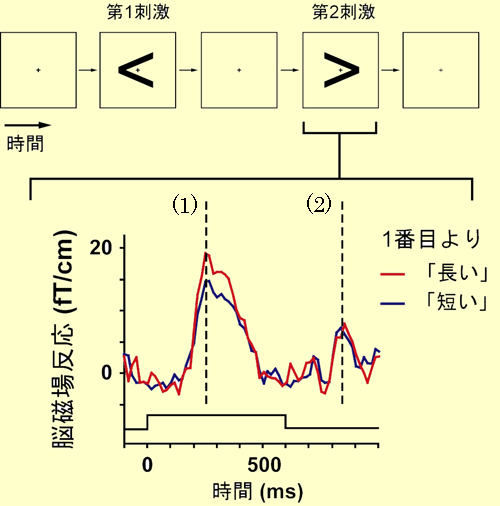Perceiving the passage of time is an essential ability for humans and animals. Here we used magnetoencephalography and investigated how our internal clock system in the brain converts sensory experiences into their time representations. We focused on neural activities in the high-level visual areas of human subjects when they saw visual patterns and estimated the duration of their presentation. The activities in the visual areas could give us neural indices about when subjects perceived the appearance and disappearance of visual patterns, thus enabling us to measure the stimulus duration "in the brain." Comparing these neural indices of time with subjective durations of stimuli measured psychophysically, we showed that, under some circumstances, these 2 durations can be dissociated in the opposite directions: although the neural index signals a "longer" interval of a stimulus over another one, it is perceived as "shorter" in subjective time scale. Instead, we found that these subjective intervals are closely linked to the strength, not timings, of neural activity evoked by visual patterns. Our results indicate that "nontemporal information" of perceptual neural activity, such as the strength (not latency) of neural responses, can influence the shaping of time representations in our brain.
Noguchi Y, Kakigi R Time Representations Can Be Made from Nontemporal Information in the Brain: An MEG Study. Cerebral Cortex, 16(12):1797-808, 2006.
